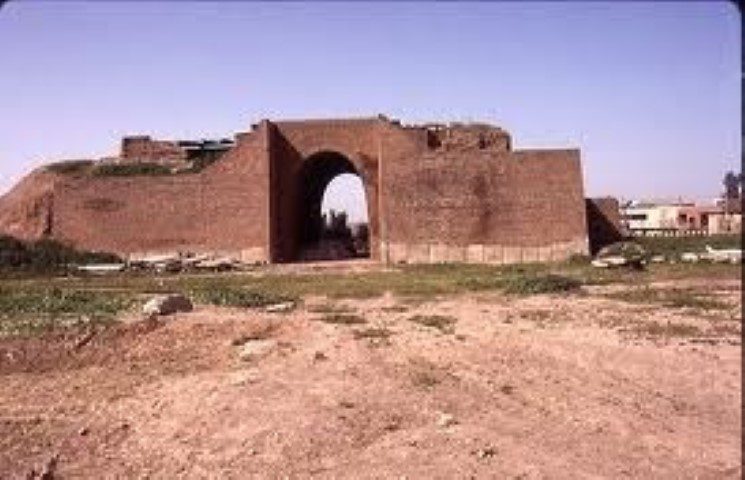Hussain A. Al-Sardar
Essex, United Kingdom
Introduction

Mesopotamia is the land between the Tigris and Euphrates, currently in the southern part of Iraq. Many civilizations developed and vanished in this very fertile part of the world. The first civilization was that of the Sumerians, who invented the cuneiform tablets for writing, by using a stylus to make wedge-shaped marks on wet clay tablets. This became the system of writing even after the extinction of the Sumerians.
Medical texts
Most of the tablets addressing medical practices were found in the Assurbanipal Library in Nineveh (currently the city of Mosul). One of these, the “Treatise of medical diagnosis and prognosis’’ covered most medical specialties. Some treatments mentioned are similar to current therapies for the same illnesses. The most extensive Babylonian text is the “Diagnostic Handbook’’ written by the ummẚnù or chief scholar Esagil-kin-apli’s of Borsippa during the reign of King Addad-apla-iddina (1069–1046 BC). However the oldest Babylonian texts on medicine dates back to the First Babylonian Dynasty from the first half of the 2nd millennium BC.1
Practitioners
In general, people believed that illnesses were punishments sent by gods for offenses committed by the sick individuals. Treatment depended on the kind of ailment.2 The ashipu or sorcerer would examine the patients and note their general appearance, eyes, mouth, pulse, etc., making a diagnosis. He would be skilled in divination and the interpretation of omens. His healing methods included incantation, conjurations, and magical rituals. If the illness was curable remedies were prescribed; but for terminally ill patients the ashipu would provide “numburi’’ rituals alongside prayers to the god believed to be causing the ailment. His role was also to attempt a cure by casting a spell to drive out the bad spirit or to refer him to another practitioner, the asu (a physician) who used therapies such as plants, minerals, or animals.3 They also performed some operations such as restoring broken bones and managing injuries. The two types of practitioners seem to have been working to effect cures. Prominent names inscribed on a tablet in Ur from 2700 BC were Lulu the Doctor and Urlugaledinna, the personal physician of the king of Lagash.
Remedies
The drugs prescribed were mainly plant and animal extracts, some with antibiotic properties, others spices and resins with antiseptic actions. Mustard seeds were used for constipation, camomile for gastric symptoms, oils for enemas, gum massage for gingivitis, poppy juice for pain, honey mixed with crushed turtle shells as a soothing paste, and sesame oil dressing in postoperative care for its antibacterial properties
Training
The physicians were generally well educated and had to attend edubba, a school. Isin, the cult center of Gula (goddess of healing) was the center for training practitioners. It is not clear whether there was supervision by senior practitioners, what skills students had to acquire, and whether there were examinations to be passed.
Sites of practice
Patients were treated at home and the family members looked after them. Rivers were used for the religious healing of illnesses, as it was believed that they could wash away the evil forces causing the illness.
Medical ethics and law
Medical regulations were based on Hammurabi’s law of “an eye for an eye and a tooth for a tooth.” According to the law code of Hammurabi, discovered on a large block of polished diorite, practitioners were not liable for making nonsurgical errors or failing to cure their patients. Liability was for the use of the knife; and both compensation for success and punishment for failure were determined by the social status of the patient. So if a surgeon saved the life of a person of high social status he received ten silver shekels, but if he saved the life of a slave he was paid only two shekels. Likewise, if a patient of high social status lost his life during the surgery, the surgeon might have had his hand cut off, but if a slave died as result of surgery the surgeon merely had to replace the slave.
References
- H F J Horstmanshoff, M Stol,C Tilburg (2004). Magic and Rationality in Ancient Near Eastern and Graeco-Roman Medicine. Brill Publishers.
- Bottero J, et al. (1996). Introduction al antiguo Oriente. De Sumer a la Biblia Grijalbo-Mondadori.
- Kramer S N. (1956). History Begins at Sumer: Thirty-nine Firsts in Man’s Recorded History. University of Pennsylvania Press.
HUSSAIN A. AL-SARDAR, MD, is a consultant physician with an interest in cardiology, currently practicing in the UK. He hails from Nineveh, Iraq.
Highlighted in Frontispiece Volume 7, Issue 2 – Spring 2015

Leave a Reply